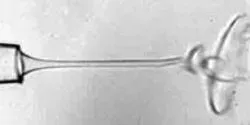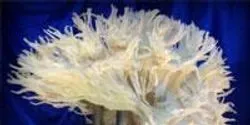Engineering

A team of biomedical engineers at Washington University in St. Louis, led by Lihong Wang, PhD, the Gene K. Beare Distinguished Professor of Biomedical Engineering, has developed the world’s fastest receive-only 2-D camera, a device that can capture events up to 100 billion frames per second.

Industrial wet spinning processes produce fibers from polymers and other materials by using tiny needles to eject continuous jets of liquid precursors. The electrically charged liquids ejected from the needles normally exhibit a chaotic “whipping” structure as they enter a secondary liquid that surrounds the microscopic jets.

Recycled tires could see new life in lithium-ion batteries that provide power to plug-in electric vehicles and store energy produced by wind and solar, say researchers at the Department of Energy’s Oak Ridge National Laboratory.

ACS examines the fun of the Kerbal Space Program and examines the chimistry of rockets in this ACS Reactions video

A Purdue engineering alumnus and longtime university supporter hopes to inspire others with his gift to the School of Mechanical Engineering and the nation's largest university propulsion laboratory.

Lawrence Livermore National Laboratory recently received $5.6 million from the Department of Defense's Defense Advanced Research Projects Agency (DARPA) to develop an implantable neural interface with the ability to record and stimulate neurons within the brain for treating neuropsychiatric disorders.














